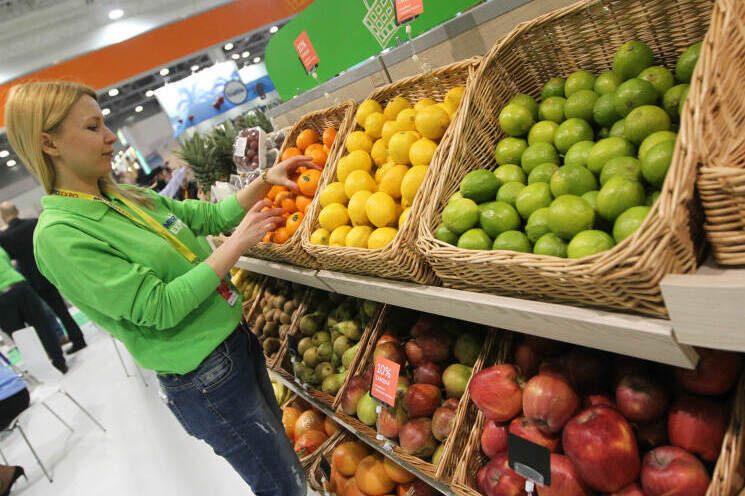Russian imports and record world food import prices
Global food imports are set to hit a record $ 1.75 trillion in 2021. This is 14% more than in 2020 and 12% higher than the June forecast. This is stated in the report of the Food and Agriculture Organization of the United Nations (FAO). Experts attribute this growth to an increase in the cost of food products in the international market and a threefold increase in transportation costs. The report notes that developing regions account for 40% of all imports.

According to the organization's forecasts, the total cost of food imports will increase by 20% compared to last year. At the same time, in countries with low income and food shortages, the increase will be even more rapid, experts say. “Developing regions are facing steep increases in prices for basic foodstuffs such as grains, animal fats, vegetable oils and oilseeds, while in developed regions, price increases are mainly seen in high value-added product categories such as fruits and vegetables, fish products and drinks, ”the report says.
For more than a year, the FAO Food Price Index has been growing. In June and July of this year, for the first time in 12 months, a decrease was recorded, but in August the growth continued. Prices are formed from the ratio of supply and demand, which began to increase after declining with the onset of the pandemic.
Consumption of cereals to increase
The report also states that the world is expected to have a record harvest of maize and rice in 2021, although the FAO forecasts that the consumption of cereals for human consumption and for animal feed will increase even more. Global sugar production is projected to start recovering after three years of decline in 2021-2022, but will still lag behind global consumption. Analysts estimated global production at 173.3 million tons, which is 2.2% more than in 2020. World sugar trade is projected to decline slightly as a result of reduced supply in major exporting countries and higher prices.
World meat and milk production
World meat production, according to FAO estimates, will also grow and amount to 352 million tons, which is 4.2% more than last year. This will be mainly influenced by the rapid recovery of production volumes in China, primarily of pork. World milk production in 2021 will also increase and will reach 928 million tons, which is 1.5% higher than last year. Moreover, growth is expected in all major producing regions, primarily in Asia and North America. Also amid the ongoing economic recovery after market disruptions due to the COVID-19 pandemic, the global dairy trade is projected to expand. However, in recent months, the growth rate of imports has slowed down due to an increase in domestic production and sluggish consumer demand, experts say.
Russian food imports equal to exports
According to Natalya Shagaida, director of the RANEPA Center for Agri-Food Policy, Russian food imports are approximately equal to exports. “Now the structure of imports has been normalized: there are no groups for which we are critically dependent on foreign supplies. The main import group is fruits and nuts. This will continue to be so if we don’t refuse from nuts, citrus fruits and bananas,” the expert commented. The next most important group is dairy products. Here the main supplier is Belarus. Within the EAEU, everything is also predictable, it is hardly necessary to consider the issue of reducing trade with our partner, the modernization of the dairy industry of which was carried out with the expectation of Russia. “As the experience of last year has shown, prices are growing for those products that Russia provides for itself,” said Shagaida. “And some of them are not even exported. So the problem of rising prices is not about imports,” she is sure.
Import ensures market saturation
In opinion of the vice-president of the Russian Grain Union (RGU) Alexander Korbut, this year Russia will increase imports of bananas, coffee, tea, apples, early vegetables and many other products. “From my point of view, this is quite natural, imports are not a factor crowding out Russian products and undermining our food security. Import ensures market saturation,” he said. According to him, the record value of world imports, which FAO predicts, is provided mainly due to a significant increase in world prices. Korbut believes that next year the upward trend will continue against the background of the post-pandemis effect. “There were huge investments of developed countries in the economy, a logistic crisis, a crisis of nitrogen fertilizers. Next year, the production cost of most of the field crops will rise, as will the cost of petrochemicals,” he predicts.
Russian imports depend on incomes and situation with ruble
The volume of Russian imports this year depends on what will happen to the incomes of the population: if they grow, then imports will also increase. The situation with the ruble will also affect. Now it is strengthening, which is becoming an incentive for importers who can buy more products in rubles, says Korbut. “This can also lead to an increase in imports. In general, Russian food export and import, I hope, will be fairly balanced. Most likely, imports will slightly exceed exports,” he predicts. According to Korbut, by the end of 2021, food imports to Russia could reach $ 33-35 billion.
Source: Agroinvestor